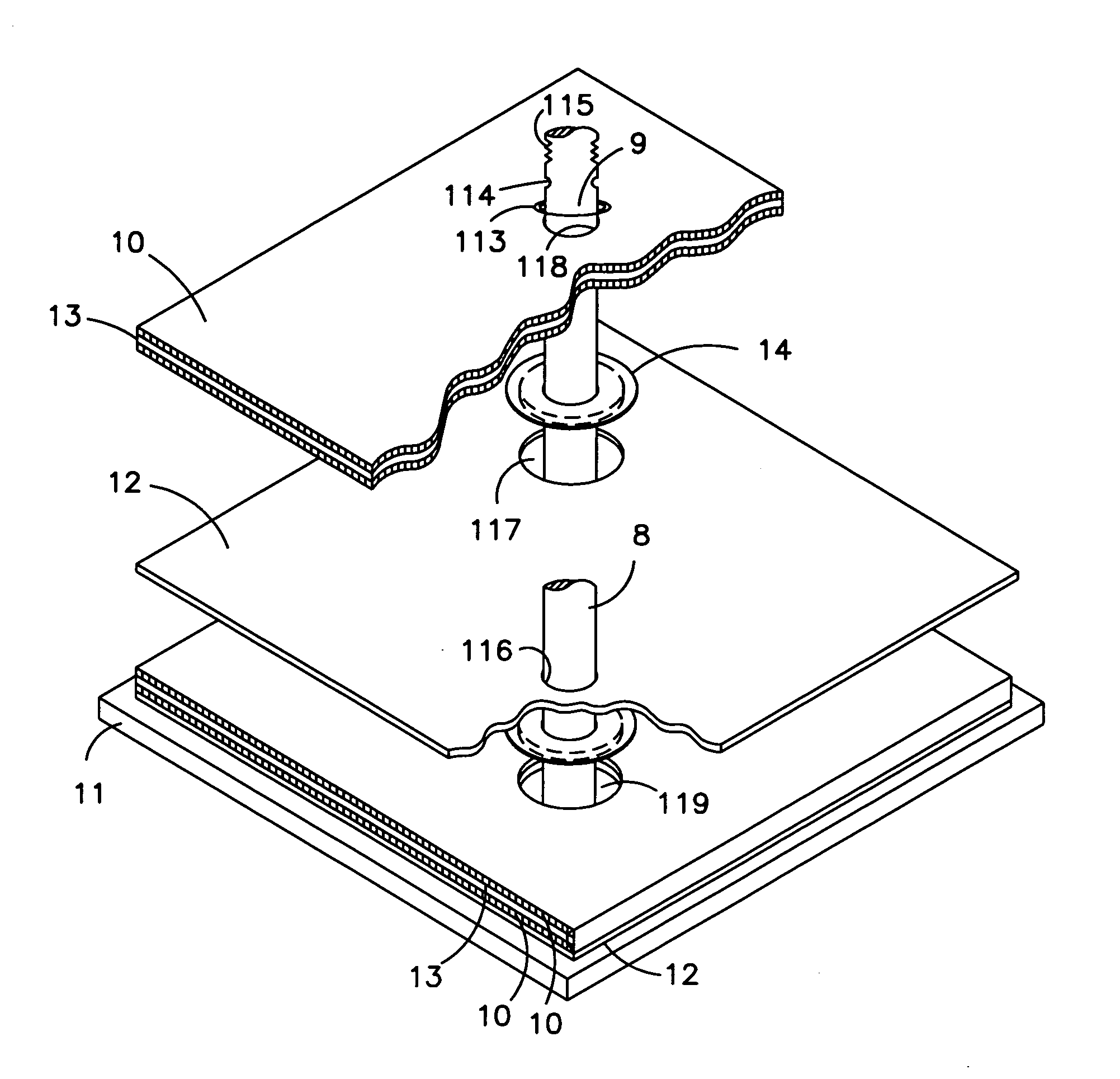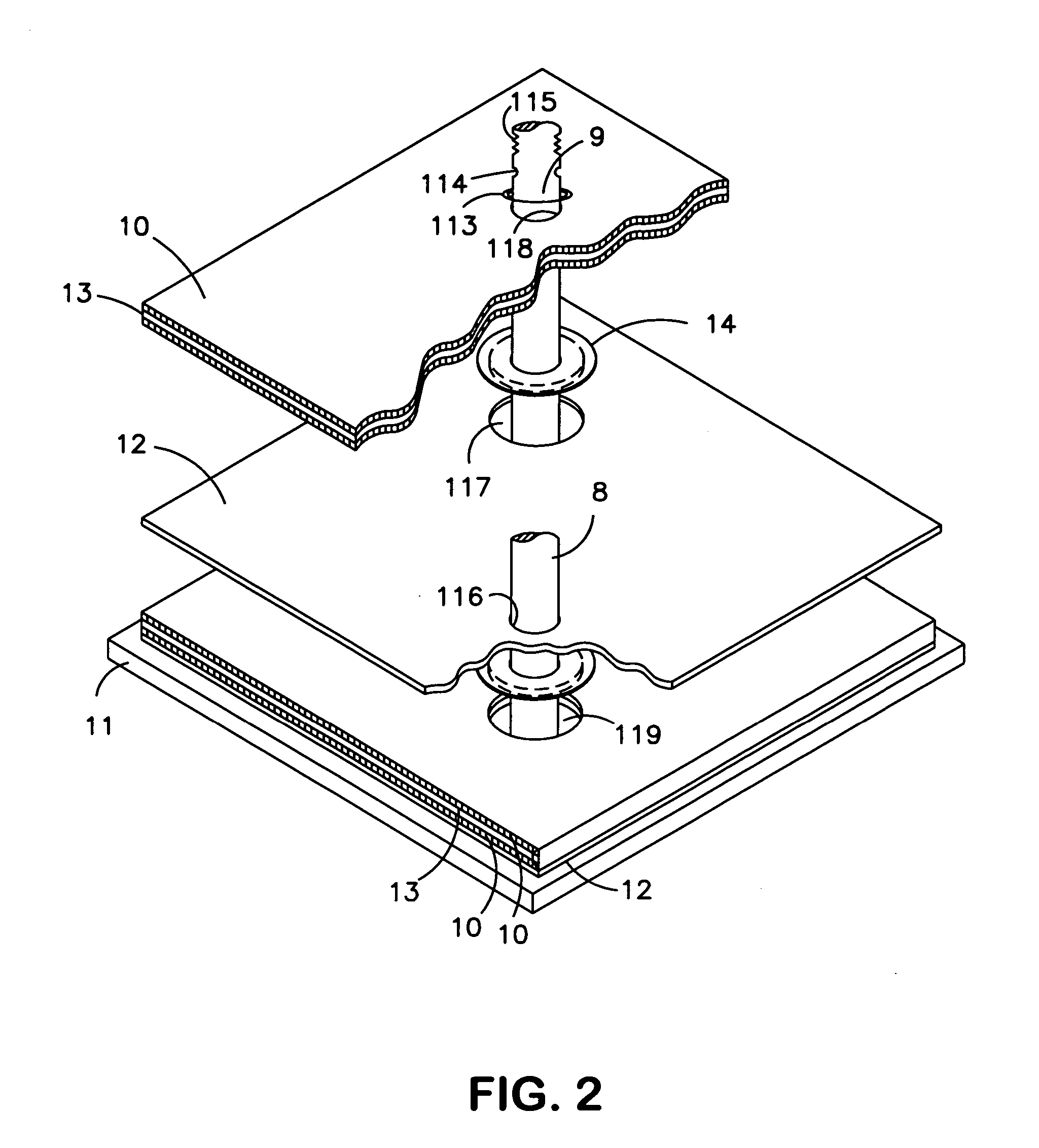Battery electrode design and a flat stack battery cell design and methods of making same
a battery cell and flat-stack technology, applied in the direction of cell components, final product manufacturing, sustainable manufacturing/processing, etc., can solve the problems of limiting the shape and size of the grid used in the lead-acid battery, limiting the usefulness of additional active materials, and difficult to use active materials, so as to increase the effectiveness and utilization of active materials, reduce resistance, and facilitate manufacturing
- Summary
- Abstract
- Description
- Claims
- Application Information
AI Technical Summary
Benefits of technology
Problems solved by technology
Method used
Image
Examples
Embodiment Construction
1. Introduction
[0022] The present invention will now be described with respect to a Valve Regulated Lead-Acid (VRLA) battery having positive and negative plates, each comprising a rectangular matrix array of wire grids with an overlying active material paste. However, the present invention is applicable to any electrical storage battery cell having any type of positive and negative plates.
[0023] Briefly, the present invention proposes a battery electrode plate structure and method whereby each battery electrode grid includes two internally disposed collector pole access channels. Preferably, two lead slugs are formed interiorly of the electrode outer frame, preferably along a diagonal line, each slug being about ⅓ of the distance from opposite frame corners. During manufacturing, the slugs are punched out and collector poles are inserted into the holes of the stacked electrode plates (or the plates are stacked onto the poles). The negative collector pole, installed through one se...
PUM
| Property | Measurement | Unit |
|---|---|---|
| thickness | aaaaa | aaaaa |
| thickness | aaaaa | aaaaa |
| size | aaaaa | aaaaa |
Abstract
Description
Claims
Application Information
 Login to View More
Login to View More - R&D
- Intellectual Property
- Life Sciences
- Materials
- Tech Scout
- Unparalleled Data Quality
- Higher Quality Content
- 60% Fewer Hallucinations
Browse by: Latest US Patents, China's latest patents, Technical Efficacy Thesaurus, Application Domain, Technology Topic, Popular Technical Reports.
© 2025 PatSnap. All rights reserved.Legal|Privacy policy|Modern Slavery Act Transparency Statement|Sitemap|About US| Contact US: help@patsnap.com



